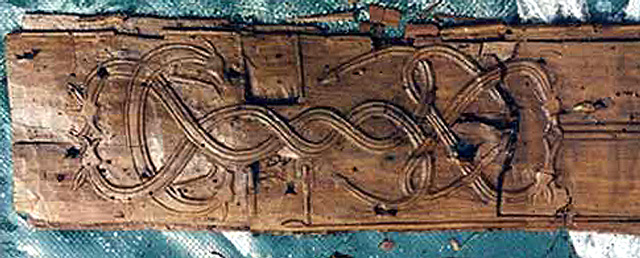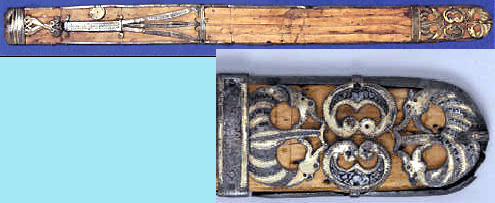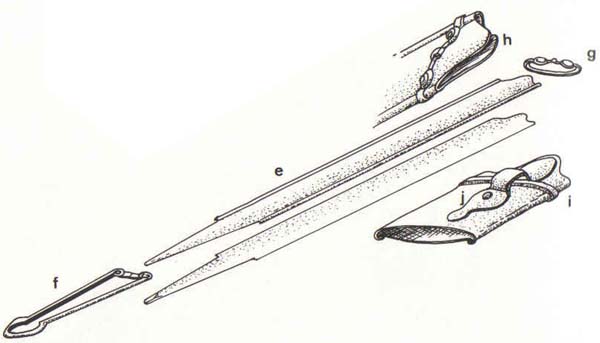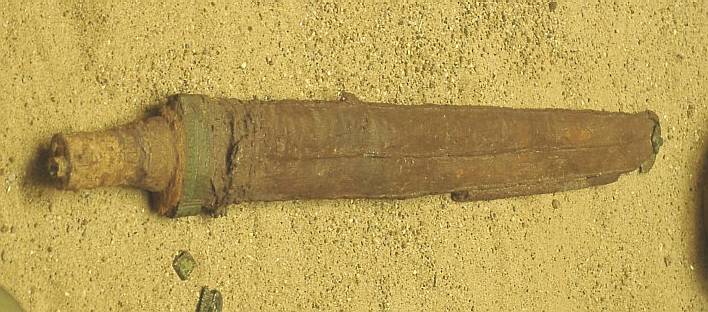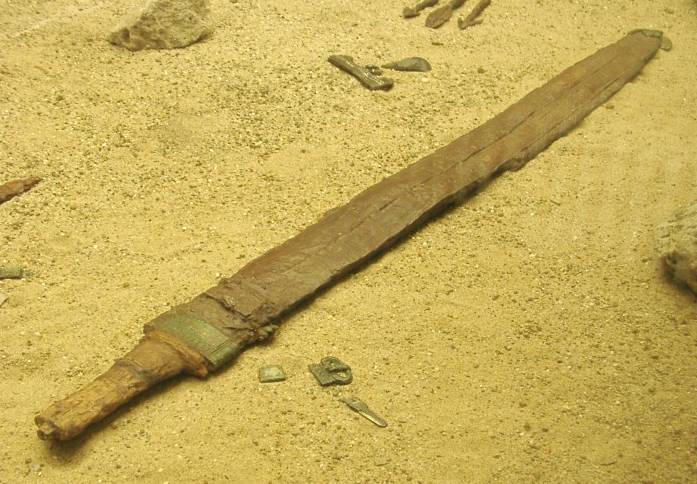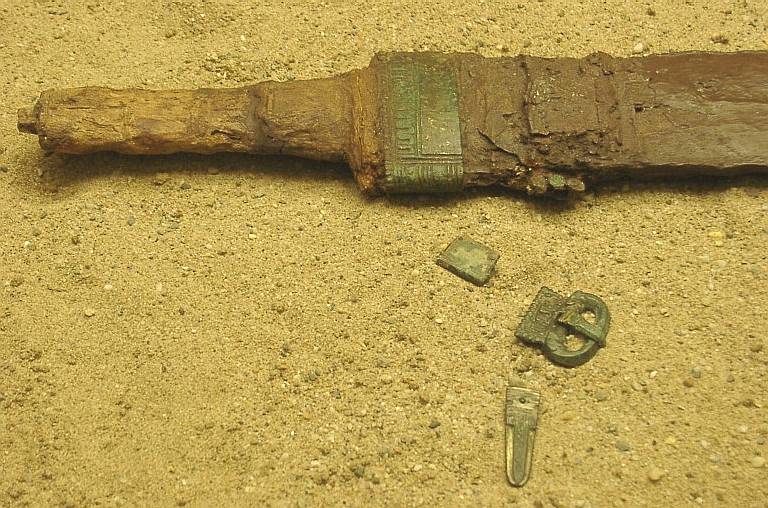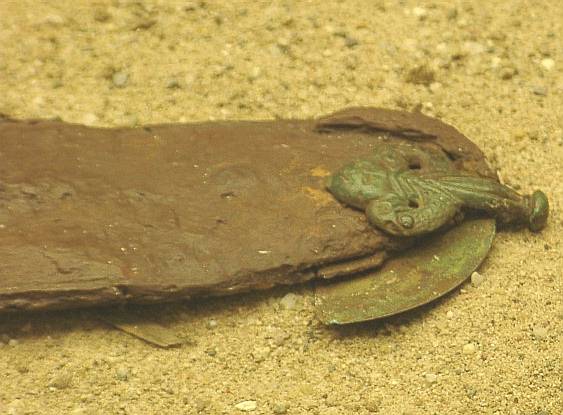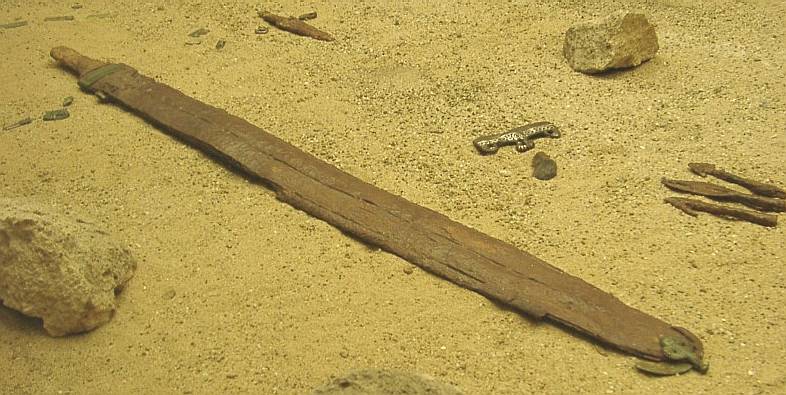There have been several very well preserved wooden scabbards from the migration age preserved in bog finds. It appears that they are made from two very thin wooden slats held together by the scabbard fittings.
I am not sure what type of wood was used, however, I am sure that it has been identified. The wood appears to be plain with one example of a knot type carving.
The scabbard tips are usually quite wide and rounded with decorative loop or hook devices for attaching the sword to the baldric or belt.
I have also read that there is some evidence that the interior of the scabbard was lined with wool and the mouth with horn.
I have attached the images I have...
If you know any more data about these scabbards please share it with us.
Thanks
ks
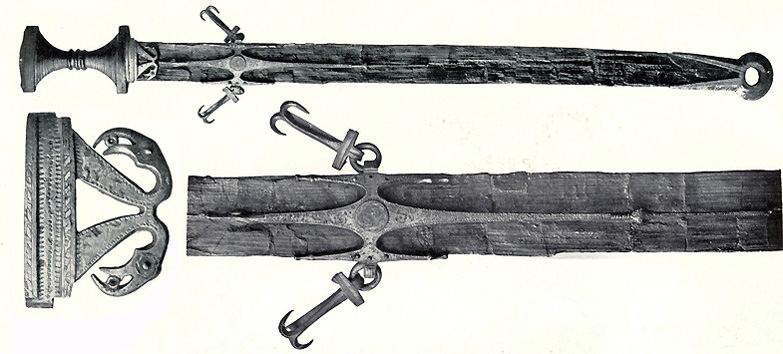
Kragehul Bog Find with Bronze Fittings with Silver inlay of Animal Heads Image from Elis Behmer "Das Zweischneidege Schwert Der Germanischen Volkerwanderungzeit" 1939

Kragehul Bog Find with Bronze Fittings with Silver inlay of Animal Heads Image by Jeroen Zuiderwijk
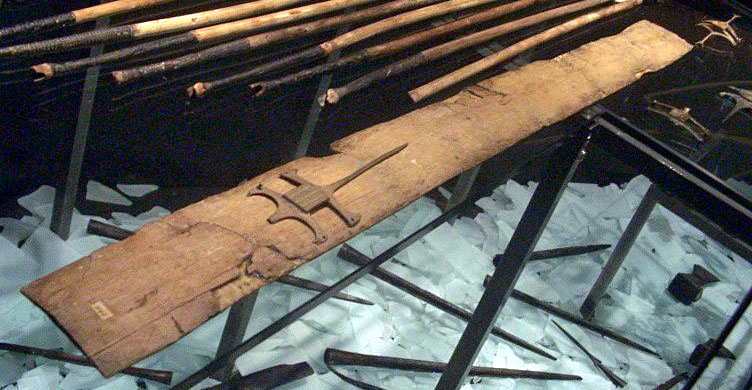
Scabbard from Nydam Bog c.350, Image by Jeroen Zuiderwijk
